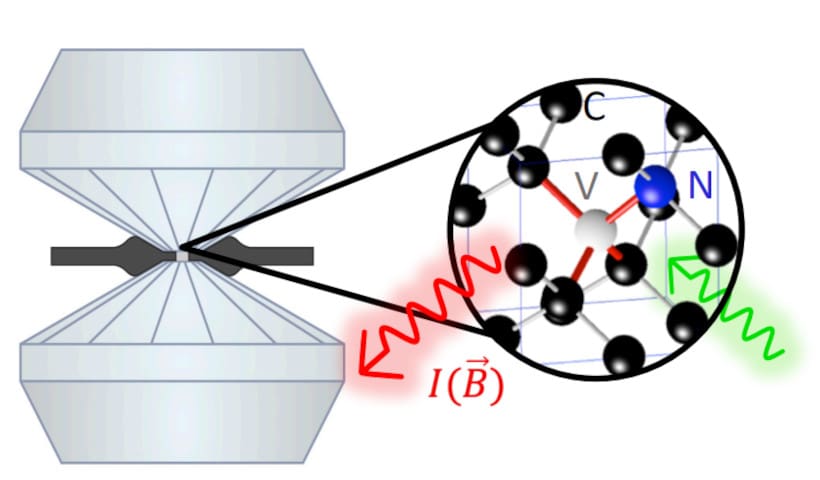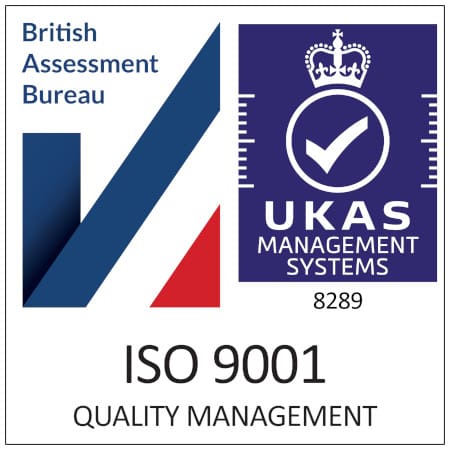NV centers unleashes new potential in high-pressure diamond anvils
NV Centers open new HP possibilities

In some groundbreaking developments, researchers have harnessed the power of NV (nitrogen-vacancy) centers to further extend the possibilities of high-pressure diamond anvils. The NV centers, which are atomic-scale defects in diamond crystals, have opened doors to unprecedented measurements and observations in high-pressure experiments. If you want to learn more of the services Almax easyLab provides in this respect, read more here.
Researchers have achieved a groundbreaking milestone by harnessing the potential of NV (nitrogen-vacancy) centers to expand the capabilities of high-pressure diamond anvils. These NV centers, which are atomic-scale defects within diamond crystals, have unlocked unparalleled opportunities for measurements and observations in high-pressure experiments.
NV centers in diamonds provide an extraordinary ability to measure magnetic fields with exceptional sensitivity and resolution. Additionally, they enable the analysis of temperature and pressure variations. The introduction of nitrogen vacancies into diamond anvils can be accomplished through methods such as irradiation, ion implantation, or the in-situ doping. By ensuring the proper crystal orientation, the signal-to-noise ratio can improve significantly.
Almax easyLab supplies specially (111)-oriented diamond anvils for optimal performance. For applications that require minimal native NV content in the diamond, we offer anvils with less than 1 ppm of nitrogen. Conversely, when irradiation is desired to maximize the number of NVs within the diamond anvil, we provide anvils with approximately +/- 200 ppm of nitrogen, resulting in around 70 ppm of NVs after irradiation. In case you consider having your microwave antenna sputtered on the diamond culet, you also might want to discuss your design and its feasibility with us.
In addition to our high-pressure applications, Almax easyLab is actively involved in the field of quantum computing and quantum sensing. We have successfully developed ultra-thin diamond windows with reduced subsurface damage, which has proven to be advantageous for emerging diamond quantum applications.
This breakthrough is expected to unlock new frontiers in understanding the Earth’s core, explore exotic states of matter, and expedite the discovery of innovative materials for future technologies. The application of NV centers in high-pressure diamond anvils represents a significant leap forward in scientific exploration and the pursuit of knowledge.

Meissner Effect above and below the critical temperature where the superconducting transition occurs.
Possible publications that might be of interest to you:
Antoine Hilberer, Loïc Toraille, Cassandra Dailledouze, Marie-Pierre Adam, Liam Hanlon, Gunnar Weck, Martin Schmidt, Paul Loubeyre, and Jean-François Roch, Enabling quantum sensing under extreme pressure: Nitrogen-vacancy magnetometry up to 130 GPa, Phys. Rev. B 107, L220102, 2023, DOI: 10.1103/PhysRevB.107.L220102
Prabudhya Bhattacharyya, Wuhao Chen, Xiaoli Huang, Shubhayu Chatterjee, Benchen Huang, Bryce Kobrin, Yuanqi Lyu, Thomas J. Smart, Maxwell Block, Esther Wang, Zhipan Wang, Weijie Wu, Satcher Hsieh, He Ma, Srinivas Mandyam, Bijuan Chen, Emily Davis, Zachary M. Geballe, Chong Zu, Viktor Struzhkin, Raymond Jeanloz, Joel E. Moore, Tian Cui, Giulia Galli, Bertrand I. Halperin, Chris R. Laumann, Norman Y. Yao, Imaging the Meissner effect and flux trapping in a hydride superconductor at megabar pressures using a nanoscale quantum sensor.
arXiv:2306.03122 [cond-mat.supr-con], 2023, DOI: https://doi.org/10.48550/arXiv.2306.03122

